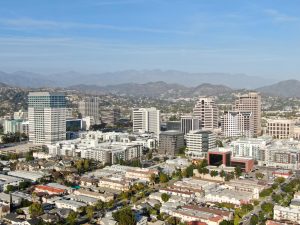Gov. Gavin Newsom puts CEQA Reform on his Agenda

California Governor Gavin Newsom has announced that he will work towards reforming CEQA this year following a court case over UC Berkeley student housing.
CEQA is the California Environmental Quality Act, signed in 1970 by then-governor Ronald Reagan.
It was designed for developers to produce an analysis of an environmental impact before building. Despite the law's noteworthy intentions, it has become a way to prevent developments from being built.
What Happened?
In February, a California appellate court blocked the University of California Berkeley from building much-needed student and low-income housing in People’s Park.
It was the result of multiple lawsuits against the plan claiming it will damage green space, bring disruption, and damage the historic nature of the park. In essence, they invoked CEQA to prevent the housing from being built.
The California Environmental Quality Act requires developers to consider the potential noise impact on residents. In this case, the concern was with college students and the possibility of parties. The court determined that UC Berkeley failed to analyze any noise impact.
Although they ruled that the school had also failed to consider any alternative location, the university reaffirmed that the project's goal was to repurpose People’s Park.
Thus, the appellate court has officially put a pause on the development.
However, the court stated that the school shouldn’t forget its plans, but fix the errors made in its environmental review.
The Problem with CEQA
The California Environmental Quality Act was enacted with good intentions, to mitigate potential development’s impact on the environment.
The 1970 bill’s true purpose was solely to prevent ecological damage from buildings. Thus, developers were required to conduct an environmental study to consider the impact a potential building would have on air quality, noise, green space, water, and more.
However, what was once a noble bill has turned into an effective way to delay and even scrap development plans altogether.
While the bill was designed for this to only apply to public projects, a 1972 court ruling determined that “public” meant any development that needed a government permit to build.
For many major cities in California, the vast majority of projects require a government permit.
Thus, they all must abide by CEQA.
NIMBYs
NIMBYs, or Not-In-My-Backyard-Ers, are residents who typically oppose proposed development that is planned near them. The most common of which is multi-family housing.
In fact, in 2020, almost 50% of new housing units planned for development were attacked with lawsuits. They were primarily sued using CEQA.
All it takes is for one resident located near the potential development to sue over CEQA, and it can delay construction and approval for years. Many of these lawsuits are baseless.
The result of this has scared developers, even ending up paying defendants millions of dollars to drop their lawsuits.
With a homelessness crisis and a pressing need for affordable housing, developments must be built. However, if CEQA is unchanged, it might prove more challenging than it should be.
For the latest news in Greater Los Angeles, keep up with BOMA on the Frontline.

